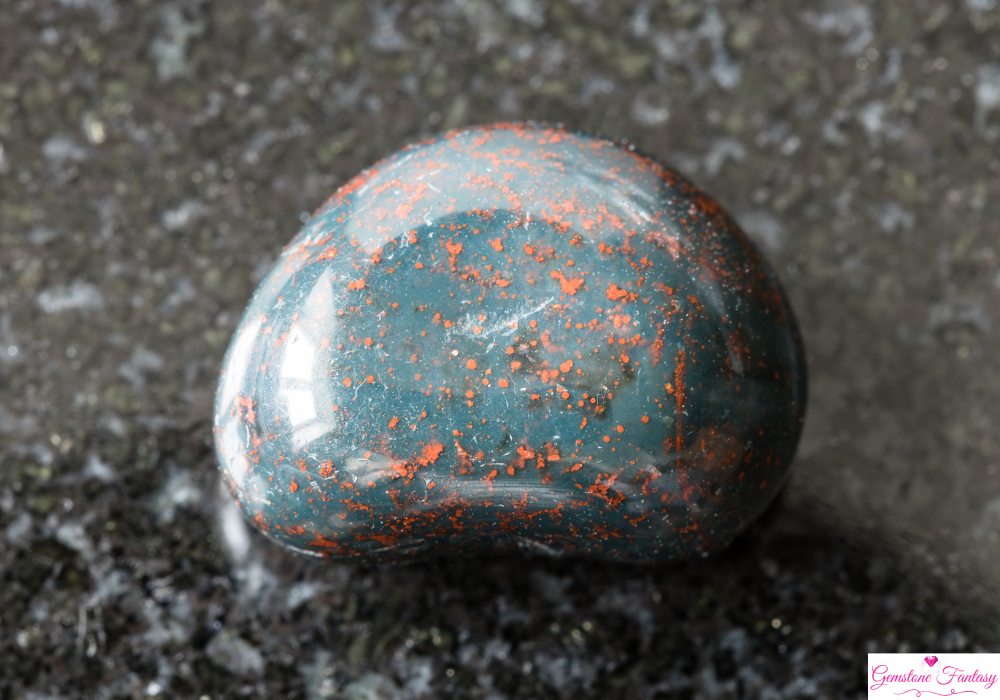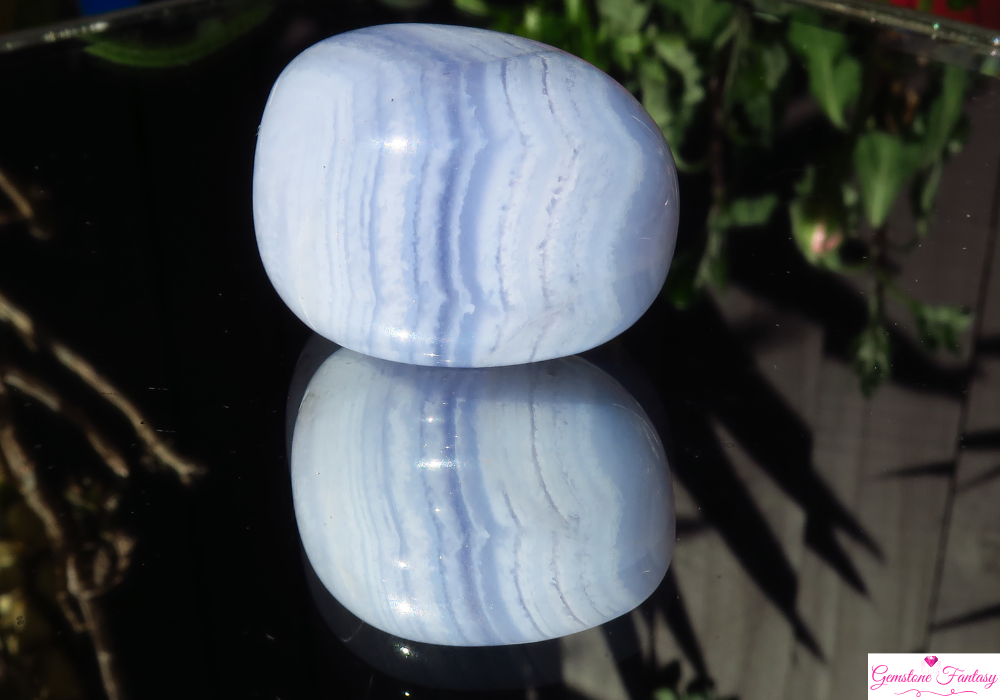Bloodstone, also known as heliotrope, is a captivating green chalcedony flecked with red or brown inclusions of iron oxide. This striking appearance has made bloodstone a popular choice for both jewelry and decorative items. Historically revered for its mystical properties, bloodstone has been associated with vitality and strength, lending it a unique place in the world of gemstones.
Geological Formation
Bloodstone forms from the crystallization of silica, which is a component of quartz. Its unique coloration comes from the presence of iron oxide inclusions, giving it the characteristic red or brown spots on a dark green background.
The geological conditions that lead to the formation of bloodstone typically involve:
- Volcanic Activity: Bloodstone is often found in volcanic regions, where silica-rich materials are deposited and solidified over time.
- Sedimentary Processes: It can also form in sedimentary environments where silica is deposited from groundwater.
Major deposits of bloodstone can be found in several locations around the world, including:
- India: One of the largest producers, known for its vibrant colors and high-quality stones.
- Brazil: Offers unique varieties with distinctive patterns.
- Australia: Known for bloodstone with striking visual effects.
Varieties and Classifications
Bloodstone is primarily classified based on its color and patterns. Some common varieties include:
- Classic Bloodstone: Dark green with prominent red spots, representing the traditional appearance of bloodstone.
- Ocean Jasper: A variety that may exhibit more varied colors and patterns, including yellow, blue, and white swirls along with the characteristic red spots.
- Banded Bloodstone: This type features distinct bands of color, often enhancing the visual complexity of the stone.
Each variety presents unique characteristics, making bloodstone a versatile choice for various applications.
Cultural Significance and Folklore
Bloodstone has been highly regarded throughout history across various cultures for its perceived metaphysical and healing properties. In ancient times, it was often believed to hold protective qualities.
- Historical Uses: Bloodstone was used as a talisman by warriors, believed to provide strength and courage in battle. It was also thought to enhance one’s vitality and stamina.
- Cultural Associations: In medieval Europe, bloodstone was often used in religious contexts and associated with the blood of Christ, hence its name. It was used in various amulets and talismans for protection.
Many cultures also believed that bloodstone had the power to heal ailments, particularly those related to blood and circulation, leading to its enduring popularity in crystal healing practices.
Birthstone and Zodiac Connections
Bloodstone is not officially recognized as a birthstone. However, it is often associated with the zodiac sign Aries (March 21 – April 19). The stone’s energizing properties resonate with the dynamic nature of Aries, offering support and strength.
Additionally, bloodstone is connected to the month of March, providing a meaningful choice for individuals born during this time.
Healing and Metaphysical Properties
Bloodstone is renowned in the realm of crystal healing for its numerous purported benefits. Some key attributes associated with bloodstone include:
- Vitality and Strength: Bloodstone is believed to increase energy levels, making it a popular choice for those seeking to boost physical vitality.
- Emotional Balance: It is thought to help ground emotional energy, promoting a sense of calm and stability in times of stress.
- Detoxification: Many practitioners believe that bloodstone can aid in detoxifying the body and improving blood circulation.
- Courage and Confidence: This stone is often associated with promoting courage and self-confidence, encouraging individuals to take action in their lives.
Popular Uses in Jewelry and Design
The unique appearance of bloodstone makes it a favored material for various artistic and decorative applications. Common uses include:
- Jewelry: Bloodstone is often used in rings, necklaces, bracelets, and earrings. Its striking colors and patterns make it an attractive addition to any jewelry collection.
- Beaded Designs: Bloodstone beads are popular in jewelry making, often combined with other stones to create visually appealing pieces.
- Carvings and Sculptures: Artisans frequently carve bloodstone into intricate designs, including figurines, pendants, and decorative items that showcase its natural beauty.
- Home Décor: Bloodstone is used in decorative pieces like coasters, tabletops, and wall art, adding a touch of nature to interior spaces.
How to Identify Authentic Bloodstone
Identifying authentic bloodstone can be challenging, especially with the availability of synthetic alternatives. Here are some tips for recognizing genuine bloodstone:
- Color and Pattern: Authentic bloodstone features natural colors and patterns. Look for irregularities and variations, as these can indicate authenticity.
- Transparency: Genuine bloodstone is generally opaque, with visible patterns. Examine the stone for consistency in color and texture.
- Weight: Bloodstone has a moderate weight compared to other stones. When held, it should feel substantial yet comfortable.
- Price: High-quality bloodstone can vary in price. Be cautious of extremely low-priced pieces, as they may not be genuine.
Tips for Caring and Storing
Proper care is essential to maintain the beauty and integrity of bloodstone. Here are some tips for caring and storing your bloodstone jewelry and decor:
- Cleaning: Clean bloodstone gently with a soft cloth and mild soap when necessary. Avoid harsh chemicals and ultrasonic cleaners, as these can damage the stone.
- Storage: Store bloodstone separately from harder gemstones to prevent scratching. A soft pouch or jewelry box is ideal for protecting the stone.
- Avoid Heat and Sunlight: Bloodstone can be sensitive to extreme temperatures and prolonged exposure to sunlight, which may cause fading. Store it in a cool, dark place when not in use.
Market Trends and Pricing
Bloodstone continues to be popular in the gemstone market, particularly among collectors and those interested in metaphysical properties. Prices can vary significantly based on quality, size, and craftsmanship. High-quality bloodstone with vibrant colors and intricate patterns may command higher prices, especially in artisanal jewelry.
The growing interest in sustainable and ethically sourced materials has also influenced market trends, leading to a greater appreciation for responsibly harvested bloodstone.
Final Thoughts
Bloodstone is a captivating gemstone that combines beauty, cultural significance, and metaphysical properties. Whether you are drawn to its unique patterns or its energizing attributes, bloodstone offers something special for everyone. With proper care and appreciation, this remarkable stone can enhance your jewelry collection or serve as a meaningful talisman in your life.

















